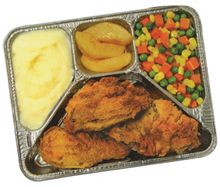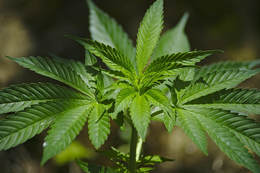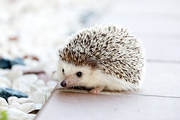 Much is written is about what we eat and not so much on how we eat. A popular diet right now is a Paleo diet, like our hunter gatherer ancestors ate, whole foods focusing on protein and vegetables and no sugar or processed food. But little emphasis is placed on how we eat. With our busy lives, let's throw everything into a smoothie and drink it while we commute or eat our lunch working at our desk or chow down fast food looking at our smart phones and the classic starting in the 1950s - eating tv dinners in front of the television. I hosted a friend and professional colleague a few years ago, raised in France who came to SF Bay Area for two days of interviews for a high level position. He made 2 observations that I remember: 1] he gave a presentation during a catered lunch meeting and everyone was eating and drinking and he felt that the audience was not paying much attention to his presentation. He didn't understand this American custom to eat and work at the same time 2) he had never seen drive-thru fast food and was horrified that people would eat in their cars off their laps - he called it "BARBARIC". Tips on how to eat. People are so busy, eating means ripping open a bag or downing that smoothie in a few minutes. DO take a moment to be mindful and grateful - as a Girl Scout whenever we ate together at camp, before every meal we would sing grace such as "the Lord is good to me, and so I thank the Lord, for giving me the things I need, the sun and the rain and the appleseed". In many cultures, it is important to take a moment to show appreciation and gratitude for the nourishment the food provides our body by saying a simple grace. DO NOT multi-task, put away the smart phones, magazine, work, television - better option is to find someone to eat with and have a nice conversation while eating. Try not stand over the kitchen sink and eat your meal. Being mindful about how we are eating will often help us to make better choices about what we are eating.
1 Comment
 I attended an interesting Linked Local Marin County sponsored talk on "The Future of Cannabis". Last November, California passed Prop 64 (AUMA - Adult Use of Marijuana Act) and the implications, regulations, and access was presented, the speakers were only able to scratch the surface of access , use, and regulations. Huo Ma Ren, the pinyin name for Cannabis Semen or cannabis seed, is listed in the category of Moist Laxatives in the Materia Medica. The first mention of Huo Ma Ren is found in the Classic of Herbal Medicine, an agriculture and medicinal plant book, attributed to Shennong, a Chinese scholar believed to have lived around 2800 BC. The key characteristics of Huo Ma Ren are: enriches the Yin fluids, moistens the Intestines, unblocks dry constipation. Huo Ma Ren or better known as hemp seed, can be imported to the US as long as THC (the psychoactive constituent) is less than 0.3%. The hemp plant has been used for thousand of years for fiber and oils. I remember in my travels to Nepal and Bhutan in 1994 seeing hemp harvested for animal food and fodder for pigs and buffaloes and I thought to myself "HAPPY PIGS". Hemp seeds are now readily available at health food stores and grocers. Recent research report healthy benefits of eating hemp seeds are the high levels of essential fatty acids, mainly Omega 6's and Omega 3's, high levels of protein, and high levels of insoluble fiber (resonates with the Traditional Chinese herbal use as a laxative). Easy ways to incorporate hemp seeds into your diet is to sprinkle a tablespoon into your smoothie or onto your salad. Cannabis related products are becoming more available - those containing CBD (cannabidiol) without THC (less that 0.3%) are legal for use in all 50 states, however local county and city regulations may limit sale and use. As a practitioner I am curious to increase my knowledge of these new products. Some of the benefits being promoted are topical use for pain, eczema, dryness and that makes sense with the high levels of essential fatty acids found in hemp seed. Other benefits being promoted are as an ingested tincture or capsules for pain and anti-nausea. I am always learning and researching protocols, techniques, and products that may benefit my patients.  Among the adult population in the United States, it is reported that 23% of the population suffers from insomnia. Poor sleep affects your daytime functioning including lack of concentration, energy, focus, and attention. In China, acupuncture is one of the primary treatment therapies for insomnia. The results of a 2013 clinical study, the efficacy of six-week influence of acupuncture on sleep quality and daytime functioning showed among the three groups: acupuncture, sham acupuncture, and control group, the acupuncture group had significantly improved daytime functioning. Acupuncture and Chinese medicine is a holistic and natural and integrative approach, and one of the positive side effects many of my patients report, who initially came in for pain or other disorders, was improved sleep and increased energy. If you want to improve your energy, focus, concentration consider acupuncture. You can schedule a free 30 minute consultation by clicking on this link: Free 30 minute consultation |
AuthorI chose the name hedgehog blog because hedgehogs are cute and they look like they are acupuncture models with their "needles" covering their bodies. I hope these blog posts educate and inform you about Chinese Medicine and Wellness. Archives
March 2018
Categories |
Proudly powered by Weebly

 RSS Feed
RSS Feed